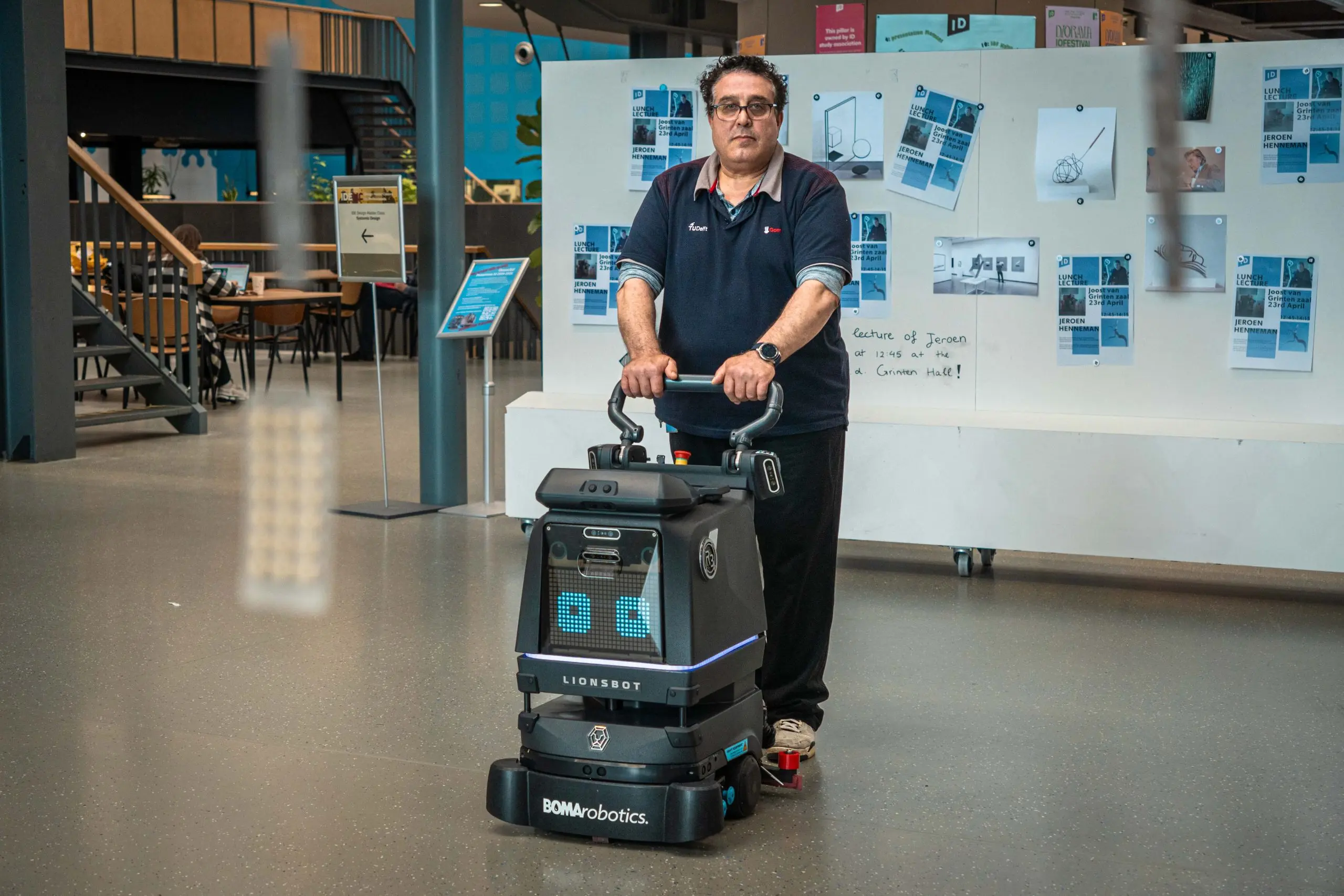In the buildings of the Faculties of Industrial Design Engineering and Mechanical Engineering and at Pulse, you can now encounter a scrubbing robot that makes the job of cleaners easier. In an attempt to make robots more flexible in their handling, researchers are keeping a close eye on the cleaning robot.
In the buildings for ME and IDE, students may encounter a cleaning robot. (Photo: Thijs van Reeuwijk)
Cleaners are not getting any younger. At an average age of 49 and with few new younger people joining the profession, helping cleaners stay healthy and employable until retirement is a concern for the Gom cleaning company (8,000 employees). To reduce their workload, the company now uses 30 imported cleaning robots. After a successful trial period, a robot was put to use on the TU Delft campus last month. The device is being used in the Industrial Design Engineering, Mechanical Engineering and Pulse buildings. A simpler version had previously cleaned the floors of the sports hall in the X Building.
Training
“We have to do four halls before 08:45,” says cleaning lady Ria. “I can now have the robot do the corridor at 07:00, and while it is at work, I do the halls myself. The corridors are then clean by 08:00, long before the students arrive.” When asked if she is not afraid the robot will take over her job, she laughs. “Well, no, the robot makes our work easier. It’s not going to replace me.”
For unforeseen obstacles, such as students standing in the way, the robot acts cautiously
“The robot now has 13 maps,” says robot specialist Jeroen Stoof of the cleaning supplier BOMA Netherlands. For each new room, the robot has to be trained to know where cabinets, walls, pillars and other obstacles are. This is how the maps are created. For unforeseen obstacles, such as students standing in the way, the robot acts cautiously. First it brakes and if the obstacle remains, it will drive past it.

Martijn Wisse, Robot Dynamics group leader at the Faculty of Mechanical Engineering, was intrigued by the cleaning robot. He realised that these robots are mainly used in factories where they have little interaction with members of the public. Things are different in the corridors of educational buildings. The idea of working with Gom to create a living lab on campus where robots learn to interact with people grew. The aim is to develop more flexible robots for cleaning, logistics (such as parcel assembly) and healthcare.
Cleaning monotonously
Charlotte Morijn, Performance Centre Manager at Gom, sees the role of cleaners changing into operators. Human and robot work together best if they can both do what they do best. The robot cleans monotonously while the operator performs more varied tasks. This could make cleaning work more diverse.
The robots will mainly operate ‘at the edges of the day’
Gom is keen to be an industrial partner in developing more functionalities for the robots. At some companies, robots clean at night, in which case they may even perform security tasks. Gom does not see a role for its cleaning robots in this. At TU Delft, the robot will mainly operate ‘at the edges of the day’.
Do you have a question or comment about this article?
j.w.wassink@tudelft.nl


Comments are closed.